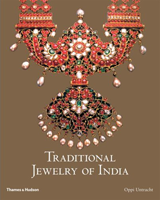
Built by Mughal emperor Shah Jahan, the Taj Mahal is widely recognized as the crown jewel of Muslim art in India. (Photo: Francisco Martins, 2007)
|
In India, a Muslim rosary is called subhah in Persian, or tasbih, in Arabic. Counting the rosary is termed, in Urdu, subhah gardani, or tasbih parna. If the reciter (A: tasbihkhwan, singer of praises to Allah) does this at least each morning and night, as the Prophet said, he or she atones for that person's sins, no matter how numerous or great.
Muslims commonly use rosaries and are frequently seen holding one in their right hand, even when engaged in other activities. Counting the beads of a rosary also becomes a calming method of coping with anxiety or mental stress. The recitation ceremony (A: zikr) is done as an act of devotion, either aloud, in a low voice, or silently, at all leisure moments while meditating (tilawah) on its meaning. Because they are used when the person is not otherwise occupied, these rosaries are often referred to in the West as "worry beads."
The Muslim rosary has 33 or 99 beads. When there are 99, they are frequently divided into three groups, usually by an additional "counter" bead placed after the 33rd and the 66th bead. Its function is to give the reciter a way of keeping track of the number of recitations said and to allow two rest pauses to be taken in one total round of recitations. This marker can be considered equivalent to the round mark or dot (ayat) in a Qur'an text, where a reader may optionally pause. The two extra counter beads are usually larger than the others, of a different material or color to give them distinction. When a shorter strand of 33 beads is used, the entire set is counted three times to arrive at the required total of 99.
At what may be considered the beginning or end of the rosary is often placed an elongated cylindrical bead made with a baluster-like profile. This is called the pillar (in Arabic, situn or rukn) or leader (imam). Also pierced through like a bead, it is threaded with the rest, and at its bottom there usually hangs a tassel (jhabba) of black or brightly colored silk, metallic silver, or gold thread, at times mixed with the colored yarn, and tied by a stringer and tassel maker (H: patu'a) with an artistic knot. Tassels are said to repel the evil eye, which is believed to dislike tassels and fringes.
The 99 beads represent the 99 beautiful names and attributes of God, Asma'u'llah (Qur'an, Surah vii 179). Muhammad said, "Verily there are 99 names of God and whoever recites them shall enter into Paradise" (Mishkat, Book cxi). Also commonly recited are 100 repetitions of the Tasbih: "O Holy God" (Subhaha'llah); the Tahmid: "Praises be God" (Alhamdu l'illahi); or the Takbir: "God is Great" (Allahu akbar).
When reciting the 99 names of God, the 100th "ineffable name of God: Allah," is said either first when starting at the pillar, or last on finally arriving at the pillar.
Muslim rosaries are made of beads from a variety of materials in uniform size; their forms can be round, oval, melon, or gadrooned. The choice of material depends on the owner's relative wealth.
Siah rosaries are sometimes made of earth from the Karbela at Meshed and are acquired upon performing the Hajj pilgrimage to Mecca. Seeds, bone, and ivory are also used. Wooden beads are used by all Muslim sects. Rosaries of sandalwood (Santalum album) are sold in large numbers to Muslim pilgrims who go Ajmer in Rajasthan to visit the famous shrine of Khwaja Saheb, a Muslim saint. They are used whenever a customary religious duty (wazifa) is performed. More expensive are rosaries of coral, amber, and hardstone beads such as carnelian (a favorite), lapis lazuli, and rock crystal. Sunni rosaries are usually a dark-colored stone.
In Mughal times, and frequently mentioned in the various accounts of the lives of the Mughal emperors, rosaries of pearls, rubies, emeralds, or sapphires were used and often given as gifts of favor. Today inexpensive plastic beads are common, frequently of a yellow color that simulates amber or of black to imitate black coral; beads of colored glass suggest a particular semiprecious stone. Very special are the rosaries carried by some Muslim mendicants (fakirs), which are made of snake vertebrae, a sign that they know a charm to cure snakebites.
Muslim Rosary » Rosaries of India » Traditional Jewelry of India
Oppi Untracht (2008) Thames & Hudson, Inc.

